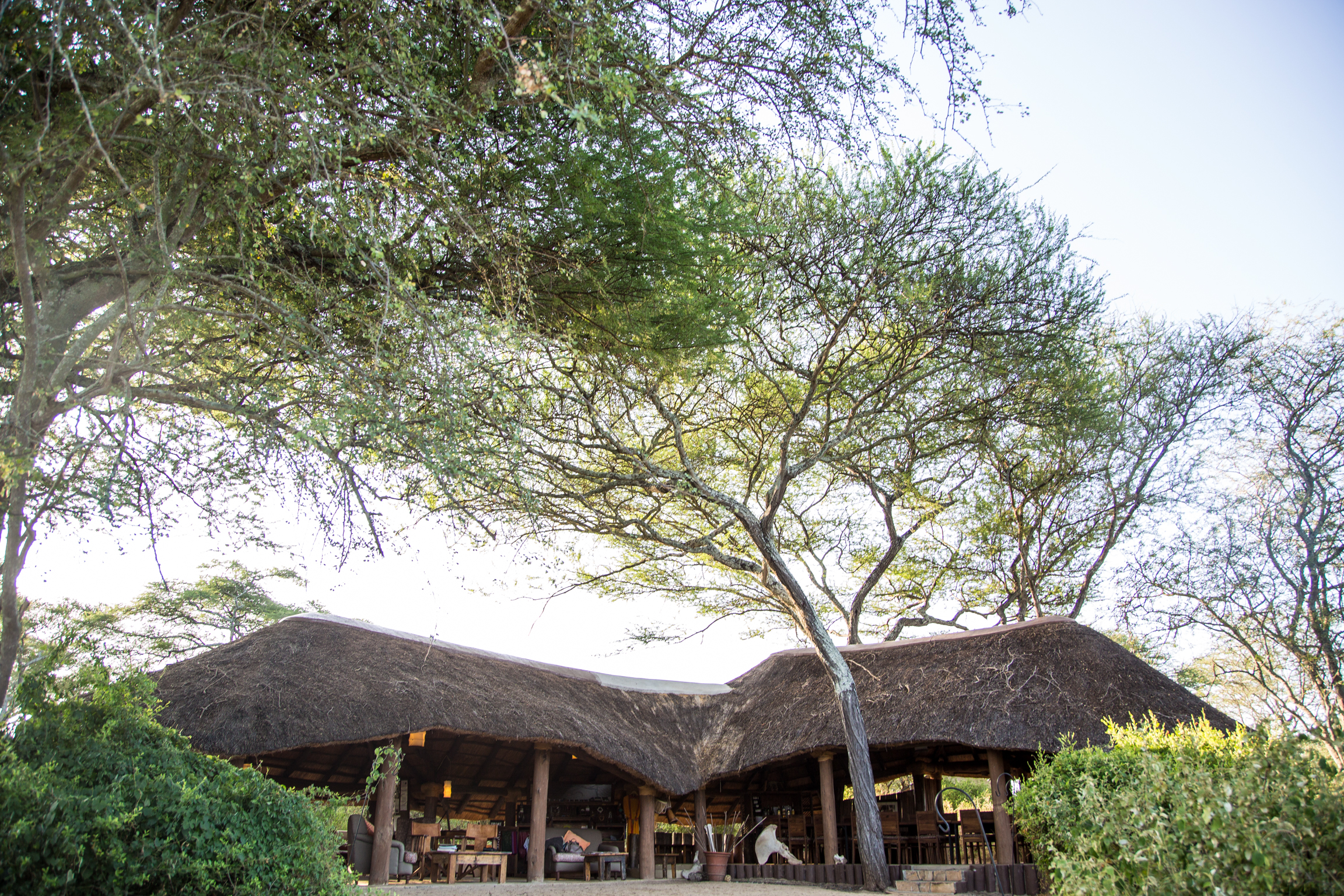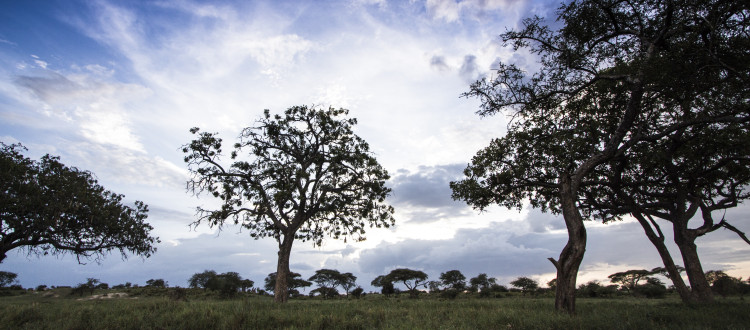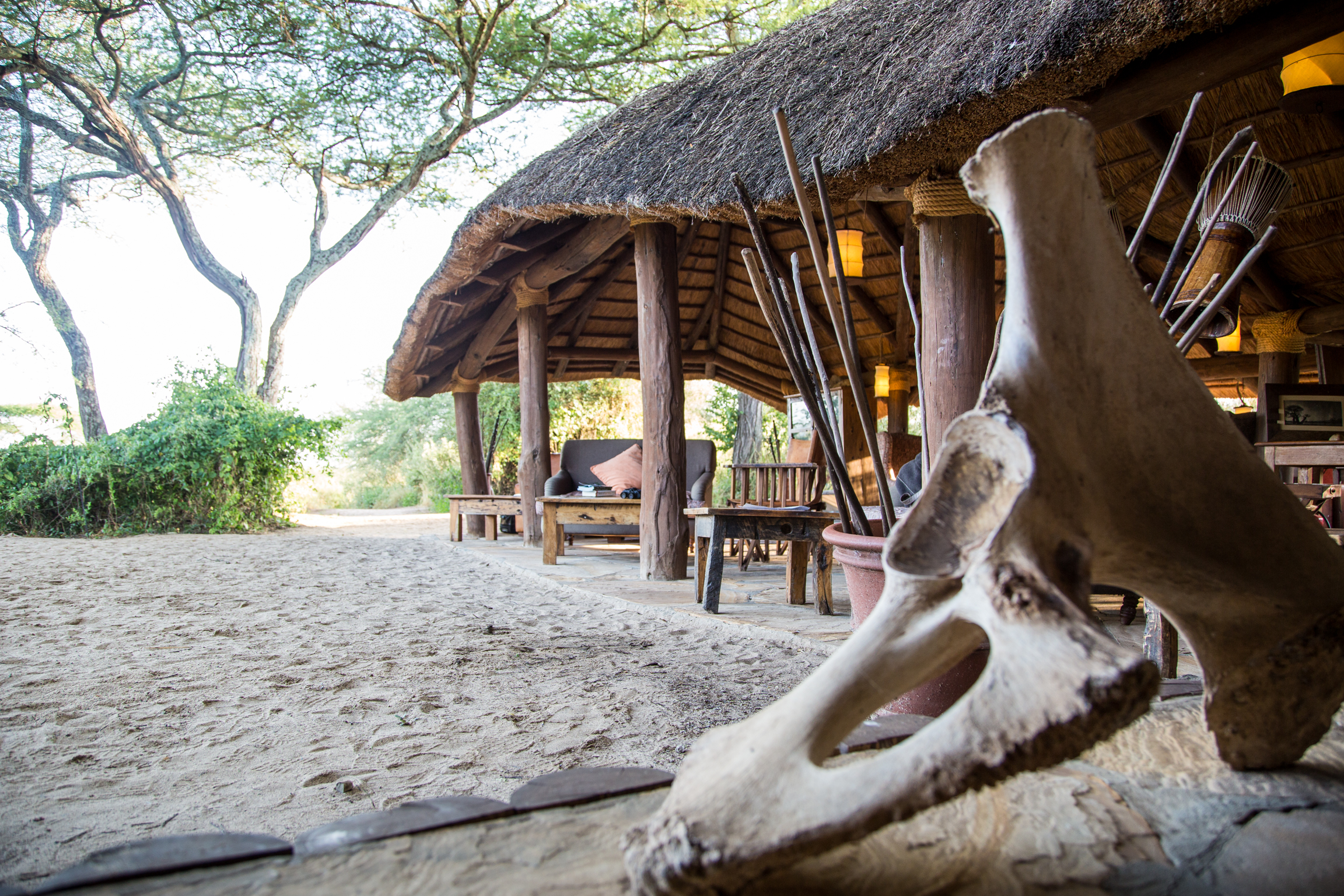Looking Back on Oliver’s Camp
By Stuart Butler
It might lack the worldwide fame of the Serengeti, but unbeknown to many Tarangire National Park in northern Tanzania, which is one of the most dramatic, beautiful and wildlife crammed corners of eastern Africa, is every part the equal of the Serengeti. Studded with grand old baobab trees and pock marked with enormous swamps that provide year round fresh water, Tarangire is the home of giants.
The park has one of Africa’s largest elephant populations and is also renowned for its tree climbing lions and migrating herds of wildebeest and zebra. Tarangire is also home to Oliver’s Camp, which has long had a reputation among safari experts as one of the finest camps in Tanzania. The story of the camp is one of risk taking, trend setting, and breaking new frontiers.
It was around twenty-five years ago when Oliver’s Camp was born. Back then Tarangire National Park was something of an unknown on the Tanzanian safari circuit (in fact Tanzania itself was still something of a mystery to most people). Safaris themselves were also different. This was back in an age when the idea of low-key, small and exclusive camps was still a little way off into the future and it was long before anyone knew what ‘community-based tourism’ really meant.
Oliver’s Camp was founded by UK born, Tanzanian at heart, safari legend Paul Oliver. He first arrived in Africa in 1981 when still in his early twenties and he’s basically been in Africa, and primarily Tanzania, ever since. Back then even the Serengeti received few safari tourists and so at first Paul was content just exploring the Serengeti, Mahale mountains (in western Tanzania and famous for its chimpanzees) and Usambara mountains (in northeast Tanzania and a now popular hiking region). But then, in 1985, he found himself in Tarangire National Park and everything changed. Paul took one look at the gigantic herds of elephants and buffalo, the rivers of wildebeest and zebra and the rainbow coloured clouds of birds and, in his own words, [gdlr_quote align=”center” ]It looked so untouched and only a few people seemed to know just how this ecosystem worked”[/gdlr_quote]
Put simply he was hooked.
Through much of the 1980’s Africa’s protected areas were ransacked by ivory hungry poachers and elephant populations across the continent crashed. Paul suspected that one of the reasons that villagers were turning to poaching was the “sheer and frustrating poverty amongst local villagers” and that with few other revenue streams open to them poaching seemed like easy money. In 1989 a worldwide ban on the sale of ivory came into force and governments across Africa started to take ivory poaching much more seriously. But new laws didn’t change the overriding attitude of many villagers towards the protected areas and the wildlife within. They generally regarded such areas as being of no benefit to them and a sauce of pesky wildlife that raided crops and killed cattle. It was around this time that Paul, who had already been leading adventurous safaris across Tanzania for some years, realised he wanted to do something different. Something that would bring an income and vested interest in the future of elephants, lions and all the rest to the average local person living a subsistence lifestyle. Today it’s pretty much taken for granted that if local communities are not involved, and gaining, from conservation projects in their neighbourhood then it won’t work, but back then this was still a fairly revolutionary idea.
The way to do this, Paul decided, was to build a safari camp on the fringes of Tarangire National Park from which a percentage of profits would go to local community development. It took several years of meetings with local communities, councillors, park authorities and other, more established, safari operators, but finally, in 1992, the first Oliver’s Camp opened on the eastern boundary of Tarangire. In those days if people visited Tarangire then they only ventured into the northern part of the park. Elsewhere there was very little in the way of a road system. This meant that not just did Paul and his partners have to establish the camp, but they also had to cut rough vehicle tracks. One of the key reasons Paul chose a remote area of Tarangire to site the first Oliver’s Camp was for the pure sense of wilderness. He wanted guests to experience an Africa where the herbivores and carnivores ruled supreme and he also wanted guests to see as much of the bush as they could on foot and so he and his team scouted out fly-camping spots and walking safari trails. These walking safaris combined with the sense of seclusion helped make the camp an immediate hit and by the mid-1990’s Paul was struggling to keep up with bed demand. It was at this moment in time that several other camps started opening up in the immediate vicinity. Suddenly, Oliver’s was in danger of losing the wilderness element that had inspired Paul to set it up in the first place.
In 2000 Paul had a chance meeting at a trade show in London with the director of TANAPA (Tanzania National Parks Authority) who told him how keen the park authorities were to promote walking safaris. Within no time a plan to relocate Olivers Camp to a new location deep within the actual park, in an area where no other lodges would be allowed, was conjured up. Before he moved though Paul said how he “thought long and hard about leaving our site of over eight years, [but] the fact that we had raised over eighty thousand dollars for the village communities and that others could now continue that income generation helped me to decide. A chance to move into the vast wilderness zone of Tarangire to conduct walking safaris in some of my favourite areas was just too good an offer to pass up”.
Everything looked good for a move in the first week of September 2001, but just as all the gear was being packed up and prepared, terrorists crashed aeroplanes into the Twin Towers. Paul, like tourism operators the world over, received cancelation after cancelation and for a while it looked as if the whole project might fall apart.
Eventually though bookings began to return and the new Oliver’s Camp started to prove just as popular as the first. By 2004 Paul and his team realised that they didn’t have the infrastructure and manpower to really market the camp to its full potential and so he partnered with Sokwe and Asilia Africa (Sokwe itself was later incorporated into Asilia) and the camp has continued to go from strength to strength.
Nowadays Oliver’s Camp has been joined by a little sibling called Little Oliver’s which is a few hundred metres to the north of the main Oliver’s. Big or little though, both camps have stayed true to Pauls vision of a low-key camp employing only the very best guides and of continuing to support community and conservation projects around Tarangire. Today Asilia supports the Sambwa Primary School outside the eastern boundary of the park and, with the African People and Wildlife Fund, human-wildlife conflict solutions and environmental education in the Tarangire region. And for guests of Oliver’s one of the key attractions is that walking safaris and overnight fly-camping adventures are still one of the highlights of a stay.
Want to join us and experienceTarangire’s magical beauty for yourself? Get in touch with your trusted travel agent or make an enquiry with us below.
The post Looking Back on Oliver’s Camp appeared first on Asilia Africa.
More Wildlife & Conservation Articles

Leopard vs Cheetah : Can You Tell The Difference
01 April 2020How often do you mistake a leopard for a cheetah or vice versa? I’m sure we’v...

What’s the difference? National Parks, Game Reserves, and Conservancies in East Africa
02 February 2020To most of us, a national park, game reserve, or conservancy are all the same...

Electric Vehicles: The Future Of East African Safari Travel?
12 January 2020October 2019 saw the arrival of our first electric, solar-powered safari vehi...

Guest Gallery: The Serengeti At Its Best
27 November 2019We recently had the pleasure of welcoming guests, Chris and Monique Fallows t...











